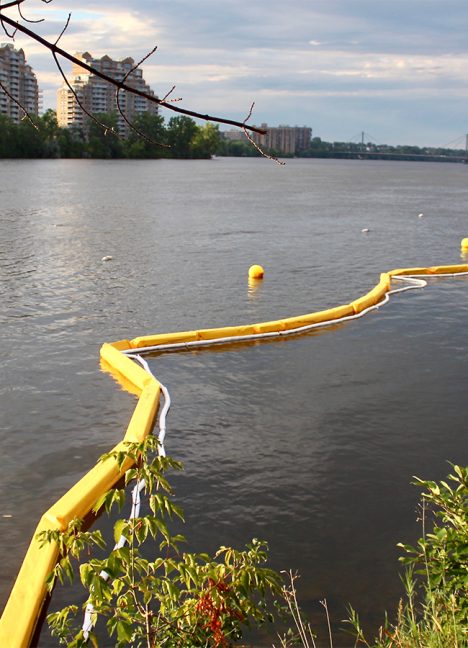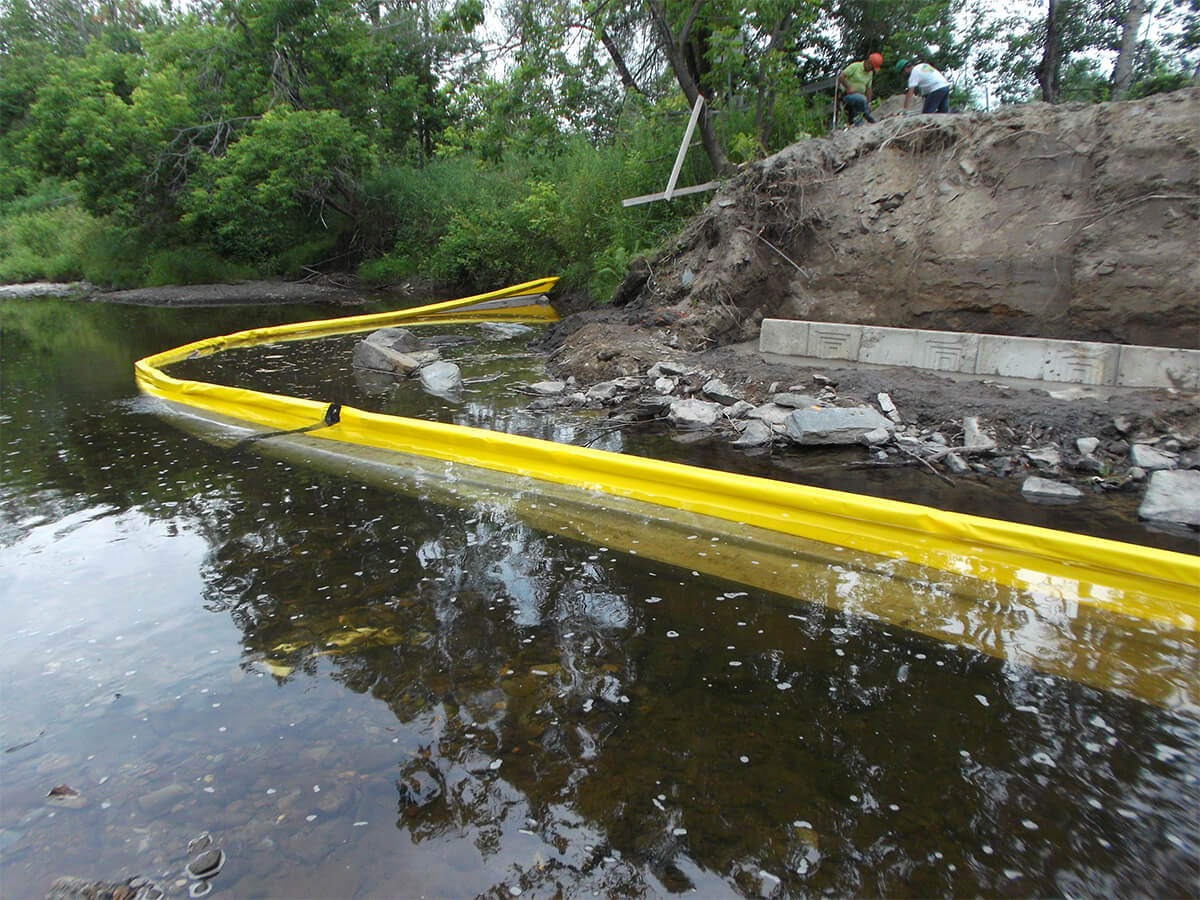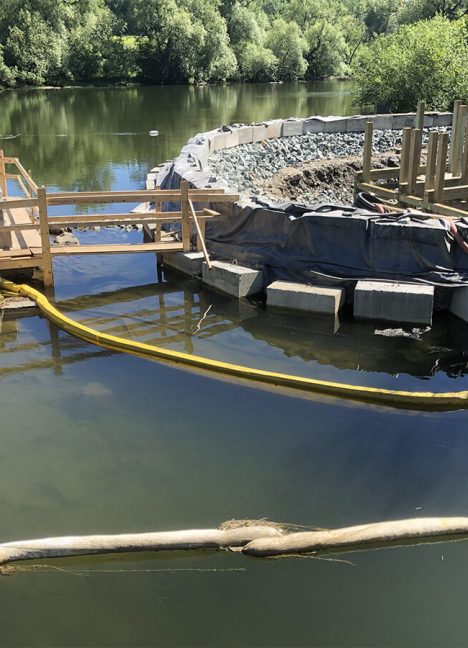Turbidity curtains
Our service, your success: outstanding delivery times, custom manufacturing and a vast, varied inventory!
Terraquavie is a Canadian industry leader in the manufacture of turbidity curtains—we are renowned for the expertise of our team, the quality of our products and our speedy service.
A turbidity curtain (TC) is a floating sediment barrier composed of an upper floating section (the float), a central section in geotextile or geomembrane (the skirt) and a lower hem (the weight pocket). Each curtain has reinforced male and female ends equipped with spur grommets to allow assembly of multiple sections into a continuous barrier.
PRODUCT MANUFACTURED BY TERRAQUAVIE

Terraquavie favours yellow for the curtain’s top float, as the Canadian navigation assistance system uses yellow to signal work in a navigable waterway. Expanded polystyrene blocks keep the curtain suspended. Hydrocarbon-resistant flotation blocks are also available upon request. Float dimensions vary from 100 mm x 100 mm to 300 mm x 300 mm depending on the application.
The skirt is made of various geosynthetics and determines the depth of the curtain. Woven geotextiles and polyvinyl chloride (PVC) membranes are most often used in manufacturing TCs. For certain specific applications, Terraquavie also uses nonwoven geotextiles, geocomposites and other types of geomembrane.
The ends of the curtain are reinforced. The female end is equipped with steel locking pins, making it easy to connect sections together to get the desired length at the site.
Terraquavie curtains are distinctive, because they are ready to use upon arrival at the site. The ballast chain is factory-installed in the weight pocket. Each chain has a shackle to connect to that of the next curtain.
The standard length for a curtain section is 15 m.
Standard depths vary from 1.3 m to 6.1 m, but any desired depth can be supplied.
Depending on site constraints, various components can be added to curtains as needed: ropes, steel cables, aluminum connectors, shackles, velcro, additional ballast, reinforcing straps and any other component needed.

Fonctions
The objective of a turbidity curtain is to contain turbid water, charged with suspended sediments, as close to the work as possible. This keeps sediment from spreading into the rest of the wetland or water environment and gives the suspended particles sufficient residence time to settle to the bottom of the water within the area delimited by the curtain.
Selection Criteria
To select the right type of curtain and accessories, a number of factors must be considered. First, it is important to be familiar with the body of water and the exact location where the TC will be installed. Current speed and water depth at the site will be factored in for the selection of the appropriate curtain. It is advisable to take your own hydrological readings, as existing bathymetric maps are often out of date. It is also important to consider the presence and amplitude of waves and the action of wind on the water surface, and to check whether there are tides or major changes in water level.
Local maritime shipping is an important factor to consider, as it can have an impact on wave presence, water level changes, and the safety of workers and recreational and commercial boaters. It is important to know the current regulations at the federal, provincial, municipal and local levels. Among other things, this tells you what types of signage to use and how to ensure worksite safety.
TCs are not designed to be used as dams or dikes. They cannot be expected to prevent the flow of significant volumes of water. In virtually every case, curtains must not be installed in a way that prevents water flow: for instance, across a stream. Use of a turbidity curtain is essential when it is impossible to prevent sediment migration in the water.
Installation
Curtains can be used in various bodies of water: bodies of salt water with or without tides, the sea, lakes, rivers, wetland and water environments, marshes, creeks, etc.
Each project requiring turbidity curtains has its own challenges that must be considered during installation.
Care must be taken to avoid damaging the shore during preparations to install the curtains in the water. During installation, it is vital to minimize sediment suspension by ensuring that the curtains do not dredge the bottom. When positioned in the desired location, the curtains must be firmly anchored to the shore to hold them securely in place. The use of anchoring systems may be necessary to ensure that the curtain does not move. TCs must be placed as close to the job site as possible without adversely affecting operations or workers. It is crucial to ensure that the location of the curtains does not block the main stream in the body of water, and that they are installed parallel to the current. For safety reasons, when there is boating in the vicinity of the curtains, it is important to install the necessary signage as required by the competent authorities.
Maintenance is a key factor in preserving the curtains’ effectiveness throughout the work and ensuring the safety of workers and other users of the body of water. The curtains must be inspected daily and after severe weather episodes. In the course of this inspection, ensure that sediment is not escaping from the barrier formed by the curtain, float freeboard is not decreasing, the curtains’ position has not changed and the curtain components are not damaged.
When the work is completed, before disassembling the curtains, it is important to leave them in place long enough for suspended particles to settle back to the bottom of the water. The same precautions taken during installation must be observed during disassembly of the TCs in order to raise as little sediment as possible into the water column.
